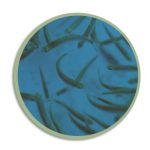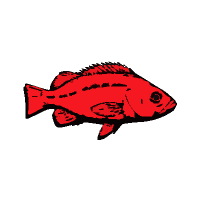Hatchery Fish

Since 2015, the Coordinated Assessments Partnership (CAP) has recognized the importance of creating access to standardized hatchery fish indicators and metrics for informing regional assessments and reporting needs. CAP will be tackling hatchery fish/hatchery program data, focusing on the goals and tasks outlined in the Pacific Northwest HCAX proposal funded by the Environmental Protection Agency (EPA) for 2020-2023. The data sharing achieved through the Pacific Northwest HCAX project will inform decisions and reporting requirements that relate to both ESA-listed and non-listed salmon and steelhead, as well as other species that rely on these fish as prey resources.
Background
The intent to develop hatchery indicators has been of regional interest since 2015. The 2015 Five-Year Plan for the Coordinated Assessments Partnership outlined a multi-step approach to develop and implement the sharing of standardized hatchery fish indicators:
- The StreamNet Executive Committee will assess currently available data, hatchery data needs, etc., before hatchery indicator development proceeds. Alignment with regional hatchery data needs will be ensured through discussion with hatchery data users and current hatchery database managers. Development should include identifying a target that needs regionally standardized data, identifying data category(ies) and focus of the next regional data standardization under CAP, involving the right people and forming a data exchange standard (DES) group.
- Continue development of hatchery indicators, assess available data, begin to populate hatchery indicators, coordinate closely with hatchery database managers.
- Finalize and adopt hatchery indicators. Begin to populate adopted hatchery indicators with data.
- Review hatchery data and flow, and assess data availability, critical gaps, relationships to regional data needs, etc., for the CAP project. Review will include recommendations for whether certain indicators require more or less data collection effort.
- Maintain automated flow of hatchery indicators and continue to populate and update adopted indicators with data. Implement recommendations of performance reviews in data collection efforts.
In the 2015 version of the Five-Year Plan for the Coordinated Assessments Partnership, seven draft hatchery indicators were proposed as a starting place: smolt-to-adult return rate (SAR); adult recruits per spawner (R/S); number of fish spawned; proportion of hatchery broodstock that are natural-origin fish; egg take; proportionate natural influence (PNI) of supplementation hatcheries; and egg to release survival rates for hatchery programs.
In 2017, an initial effort was started with the development of a draft DES for five indicators: number of fish spawned, proportion of natural-origin broodstock, egg take, SAR, and R/S. Lack of funding prevented further work at that time.
In 2020, the CAP Core Team developed a proposal to fund development and initiate sharing of hatchery indicators, titled Salmonid Hatchery Information for Regional Decision-Making Through the Hatchery Coordinated Assessments Exchange (Pacific Northwest HCAX). The proposal submitted by the Washington Recreation and Conservation Office/Governor’s Salmon Recovery Office, Washington Department of Fish and Wildlife, Colville Tribes, Pacific Northwest Aquatic Monitoring Partnership, and StreamNet was selected for funding through an EPA Exchange Network Grant. Work will take place from 2021 to 2023 and will leverage existing partner work and past CAP work. The HCAX project process will enable interested partners to collaborate to identify and share key salmon and steelhead hatchery HLIs and achieve the following outcomes:
- Advance sharing of standardized HLIs and metrics for hatchery salmon and steelhead in a well-defined, transparent manner across the Pacific Northwest
- Improve consistency of the information communicated with the public and that used for environmental reporting required by and for regional decision-making
- Support and contribute to reporting on salmon and steelhead for states, tribes, tribal consortia, federal agencies, and other partners
The following is a brief overview of the HCAX project tasks and timeline, facilitated by PNAMP:
- Nov — Dec 2020: Identify participants for two working groups, Biologists and Data Managers
- Jan 2021 — Mar 2021: Identify appropriate hatchery HLIs to share regionally
- Mar 2021: Workshop 1 to discuss and confirm HLIs
- Apr 2021 — Aug 2021: Agree on definitions and create controlled vocabulary
- Sep 2021 — Jan 2022: Develop data-sharing rules and procedures
- Mar 2022: Workshop 2 to review progress toward DES
- Apr 2022 — Sep 2022: Refine DES, develop schema, develop and test flow configurations
Additional Hatchery Related Resources
- Artificial Production Review and Evaluation (APRE) information on the NPCC website
- Hatchery Reform and HSRG documents and tools
Workshops and Events
View the PNAMP CAP webpage and Hatchery Data Sharing (HCAX) webpage for information about ongoing work being done through the HCAX 2020-2023 process and upcoming events.
Hatchery Fish Documents
| File | Description | File Date |
|---|---|---|
| Coordinated Assessments Hatchery Origin High Level Indicators DES (HCA version 20230614) | Coordinated Assessments Hatchery Origin High Level Indicators Data Exchange Standard (DES), HCA pilot version 20230614. Effective date: 6/14/2023. This zip file contains the following file versions of the HCA DES: PDF document; Word document; Word document with tracked changes; Access database template; and Excel template; initial draft list of hatchery programs. | 2023 |
| Five-Year Plan for Coordinated Assessments Partnership 2nd revision of the 2019 adopted version (rev Nov 2022) | This is the 2nd revision of the Five-Year Plan for Coordinated Assessments Partnership adopted in 2019. This November 2022 revised version incorporates edits discussed and supported during the StreamNet Executive Committee meeting on September 21, 2022. | 2022 |
| Five-Year Plan for the Coordinated Assessments Partnership adopted 20190731 (revised 9Sept2021) | Revised version of the Five-Year Plan for the Coordinated Assessments Partnership adopted in 2019 and revised in 2021 during the September 9, 2021 Executive Committee meeting. This updated version of the plan describes the hatchery indicator work that is ongoing through the HCAX project, updates the approach for adding new content about the available of data for salmon and steelhead populations without CAP Fish HLIs and /or trends data, and updates the CRITFC ITMD project description. | 2021 |
| Five-Year Plan for the Coordinated Assessments Partnership (v. 20200902) | Sep 2, 2020 Executive Committee Meeting – Five-Year Plan for Coordinated Assessments Partnership (v. 20200902) | 2020 |
| Five-Year Plan for the Coordinated Assessments 2019 | 2019 updated version of the Five Year Plan for Coordinated Assessments | 2019 |
| Five-Year Plan for the Coordinated Assessments 2018 | 2018 updated version of the Five Year Plan for Coordinated Assessments | 2018 |
| Five-Year Plan for the Coordinated Assessments 2017 | 2017 updated version of the Five Year Plan for Coordinated Assessments | 2017 |
| Five-Year Plan for the Coordinated Assessments 2015 | 2015 Five Year Plan for Coordinated Assessments | 2015 |
| Recommendations for Broad Scale Monitoring to Evaluate the effects of Hatchery Supplementation on the Fitness of Natural salmon and Steelhead Populations | Final Draft Report of the Ad Hoc Supplementation Monitoring and Evaluation Workgroup (AHSWG). AHSWG has focused its efforts on designing recommendations for monitoring which will help predict the magnitude of change to abundance and productivity in supplemented natural populations that can be attributable to hatchery influence. Building off the previous Supplementation M&E Workshops and the work of CSMEP, the AHSWG provides comments and recommendations for M&E of supplementation programs, which will enable a regional assessment of supplementation effects on natural salmon/steelhead populations. | 2008 |

